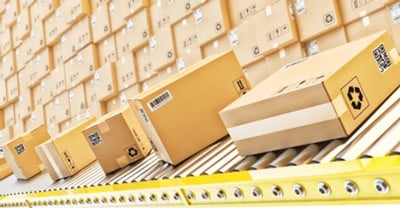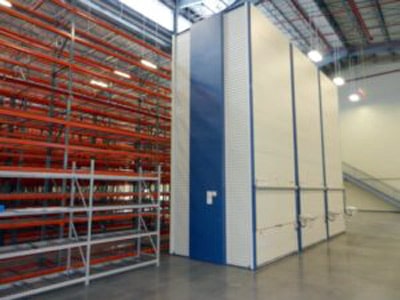No matter what industry you’re in, efficiently fulfilling orders is key to satisfying customers while maintaining your bottom line. Manually completing orders one-by-one may work for a little while, but you may find yourself falling behind and orders backing up as demand grows.
Automating or even partially automating your order fulfillment process is a smart solution that streamlines operations and gets orders out the door more quickly. Let’s review the 4 signs that it’s time for you to consider an automated order fulfillment system.
1. You Can’t Keep Up with Orders

A growing company is a good thing—but it’s not so good when you get so many orders that you can’t fulfill them promptly. You might address this by hiring more employees, but then you find your current order fulfillment system can’t keep up and you’re running out of space.
If you have a basic setup like a gravity conveyor that pushes totes down the line, this will work for a couple hundred orders per day. But it won’t be able to keep up as order demand grows to several thousand each day.
In this instance, you urgently need a more efficient system to expedite order fulfillment and effectively manage an overwhelming volume of work. If you can’t process orders in a timely manner, you’ll end up with dissatisfied customers and lost business.
Some automated solutions include:
- Order picking systems
- Automated guided vehicles
- Automated storage and retrieval systems
- Conveyor systems
- Case forming and sealing
- Case packing
- Palletizing robots
2. You’re Experiencing High Error Rates

Mistakes in order processing, such as sending the wrong item or incorrect quantities, can be a sign of overreliance on manual processes.
For instance, an employee may misread an order form, or select the wrong item, or or simply be fatigued. This is especially applicable if you rely on pick-to-paper packing lists, where warehouse staff use printed lists to manually locate and select the correct items.
While this method can be effective in smaller operations, it has some limitations. It’s time-consuming and prone to errors, as item numbers and quantities can be misread. It’s also less efficient when dealing with large volumes of orders.
These frequent errors can damage your reputation and customer trust. An automated order fulfillment system can help reduce these errors by providing accurate, real-time data and removing much of the manual intervention in the order fulfillment process.
Automated order picking systems can include:
- Pick-to-light: Lights guide workers to the correct product locations. The light points out the exact shelf or bin where an item is located and displays the quantity needed for the order.
- Pick-to-voice: Voice commands direct pickers to item locations by instructing them what items to pick and where to find them.
- Robotics: Robots can be used in a variety of ways to pick products quickly and accurately, including through high-speed pick and place that doesn’t require a human operator or automated guided vehicles that transport pickers to appropriate warehouse locations.
Each of these systems has its own advantages and is suited to different types of operations. The system that’s right for your operations depends on warehouse size, the variety and volume of items, quantity or orders, and your budget.
3. Your Customers Are Complaining about Inaccurate or Slow Orders

A rise in customer complaints related to order fulfillment — such as late deliveries, wrong items delivered or damaged goods — often signals problems in the order fulfillment process.
These complaints are not just symptoms of order fulfillment problems but can also lead to broader business implications. If you’re a B2C company, dissatisfied customers may share their negative experiences with others or on social platforms, potentially harming your brand image. They may also choose not to do business with you in the future.
Automating the order fulfillment process can significantly improve your customers’ experience by ensuring timely delivery, accuracy in orders and efficient handling of returns or exchanges. It can also provide customers with real-time updates about their orders, enhancing transparency and trust.
4. You’re Having Difficulty Scaling During Peak Times

One of the common challenges businesses face is scaling their order fulfillment process during peak times. These could be seasonal peaks like holiday seasons or promotional periods.
As order volumes increase, you’ll feel immense pressure on your existing order fulfillment infrastructure as you struggle to process orders quickly and satisfy your customers.
Manual order fulfillment processes typically lack the flexibility to scale up quickly. Hiring more staff or working overtime to handle increased order volumes is expensive and time-consuming due to training. Similarly, expanding physical space for storing and processing orders might not be feasible or cost-effective in the short term.
An automated order fulfillment system offers scalability because it can efficiently handle large volumes of orders without requiring more manpower or physical space.
Improve Your Operations through Automating Your Order Fulfillment System
Ready to learn more about automating your order fulfillment system? RMH Systems is ready to assist you. We’ve helped all kinds of companies streamline their order fulfillment process, including ecommerce, B2B and traditional fulfillment. Because we handle your project fully in-house, you’ll be able to save time and money on your turnkey solution. Request a free consultation today to learn more.